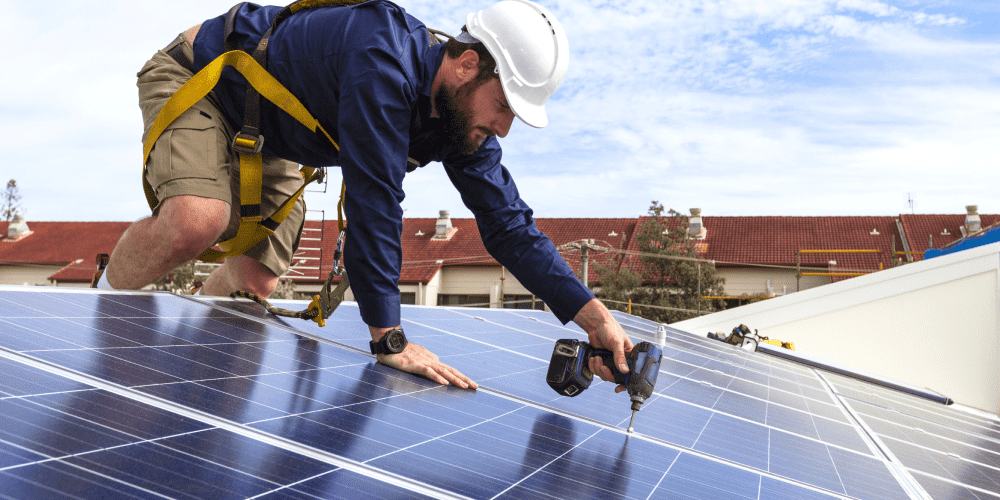Solar energy terminology guide
Understanding the different terms used in solar power can be confusing. We’ve compiled the most commonly used terms in the industry and what they mean.
The language used in solar energy content can be technical, leaving you uncertain of what it really means.
Having gathered the most common solar power terms and acronyms used in Ireland, we've written a short explanation in layman’s terms for what you need to know.
Solar energy glossary
Solar panel
The device that converts sunlight into electrical energy through solar photovoltaic materials. When multiple panels are connected together, it can also be called a solar system or solar array.
Solar battery
A rechargeable solar battery, connecting a solar cell with battery power storage. It rations excess power so that it can be used to offset peak or nighttime use. Battery storage capacity is measured in KWh.
Photovoltaic (PV)
The process by which a solar panel converts sunlight into electricity. It occurs when photons from sunlight strike the surface of a solar cell, causing electrons to be released, creating an electric current.
Solar cell
The basic unit of a solar panel that converts sunlight into electricity. It's typically made of semiconductor materials such as silicon but can be made from different materials.
Maximum Power Point (MPP)
The voltage and current at which a solar panel operates at its maximum efficiency, also known as the MPP voltage and current.
Capacity or size
Capacity refers to the maximum output capability of a solar power system under optimal conditions. It's usually measured in units of kilowatts (kW). For instance, a 5 kW system has a capacity of 5 kilowatts, indicating its maximum power output under ideal circumstances.
Materials
Monocrystalline
A type of solar cell made from a single crystal of silicon, known for its high efficiency and uniform appearance.
Polycrystalline
A type of solar cell made from multiple crystals of silicon, typically cheaper to produce than monocrystalline cells but with slightly lower efficiency.
Thin-Film:
Solar cells made from thin layers of photovoltaic material deposited on a substrate (an underlying layer), offering flexibility and potential cost savings compared to traditional silicon-based solar cells.
Roofing
Roof pitch or roof angle
The angle at which solar panels are positioned relative to the horizontal plane and facing towards the sky, typically recommended between 20-35° for optimal efficiency.
Orientation
The direction in which the solar panels are installed relative to the compass directions. In Ireland, the optimal orientation is south-facing for the best sun exposure.
Units of measurements
Watt (W)
The essential unit used to measure the capability of electricity-producing devices.
Kilowatt (kW)
A thousand watts, 1 kW = 1,000 watts.
Kilowatt peak (kWp)
Unit of measurement for the output of a photovoltaic system. This is the maximum rate that your solar panel can generate energy when in peak conditions. For example, a 4 kWp panel can produce up to 4,000 watts of power.
Technology
Inverter
A device that converts the direct current (DC) electricity produced by solar panels into alternating current (AC) electricity suitable for use in homes or businesses.
Direct Current (DC)
A form of electrical current flowing consistently in the same direction. In solar photovoltaic systems, DC electricity is generated by solar panels and then converted to AC electricity using an inverter for use in homes and businesses.
Alternating Current (AC)
A form of electrical current in which the direction of the flow of electrons changes back and forth at regular intervals. The electricity grid and most everyday household appliances use AC.
Efficiency
The ratio of electrical energy output from a solar panel to the amount of sunlight it receives. Higher-efficiency panels can convert more sunlight into electricity.
Regulations and financing
Sustainable Energy Authority Ireland (SEAI)
The governing body that provides grants and financial incentives to Irish businesses and homeowners looking to invest in solar power.
Solar Electricity Grant
Grant offered by SEAI for homeowners to install solar systems on private properties.
Non-Domestic Microgen Grant
Grant offered by SEAI for businesses, community buildings, or agriculture.
Building Energy Rating (BER)
A measure of a building's energy efficiency. It assesses the energy performance of a property, providing an indication of its energy consumption and carbon emissions. All homes and electrical appliances in Ireland should have a rating.
BER certificate
Ratings are typically expressed on a scale from A to G, with A being the most energy-efficient and G the least. Various factors determine the rating, including insulation, heating systems, ventilation, and renewable energy sources.
Couldn't find the term you're looking for? Get in touch with us at This email address is being protected from spambots. You need JavaScript enabled to view it. to let us know which term(s) you'd like us to add.


